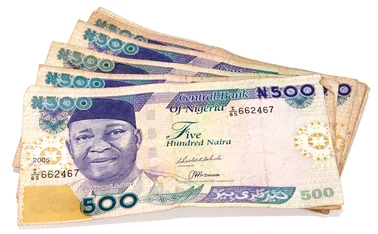
Five years of the renminbi in SDR and its adoption in central bank portfolios

When the renminbi (RMB) was added to the International Monetary Fund’s (IMF’s) special drawing rights (SDR) basket in 2015, many central bank reserve managers could be forgiven for being confused.
The odds that RMB would have been admitted to the SDR – a group of the world’s largest globally traded currencies – at the IMF’s five-year review were low, given the currency’s capital account convertibility could arguably have been considered insufficient.
However, the Chinese currency was added to the SDR and given a weight of 10.9%, behind the euro and dollar but ahead of the Japanese yen and sterling.
This year, as scheduled, the IMF will review the weightings of the SDR again. During a roundtable held as part of Central Banking’s Summer Meetings in partnership with Bank of China (Hong Kong) (BoCHK), policy-makers discussed how the role of RMB has changed over the past five years and reviewed its adoption among central bank portfolios.
“The inclusion of RMB in the SDR is very important for the currency’s internationalisation,” said one panellist from Asia. “I expect that trend to continue in the next few years.”
Growing in prominence
The speakers, all of whom who work at central banks and supranational organisations, noted RMB’s growth in prominence as a reserve asset over the past decade.
At the end of 2020, $267 billion worth of RMB was held by 70 central banks worldwide, according to data from the IMF. This has grown from $90 billion four years ago.
The People’s Bank of China has $3.2 trillion worth of reserves, most of which is held in RMB. As a result, central bank RMB holdings represent 2.1% of foreign exchange reserves, or 2.2% of allocated reserves.
However, the panellists noted that, if you remove the People’s Bank of China from the data, RMB accounts for almost 3% of FX reserves.
In addition, the currency has also gained prominence in the realm of payments. Data from payment services provider Swift shows RMB is the sixth most used currency for domestic and international payments.
Similarly, the Bank for International Settlements (BIS) also recognises RMB as the most actively traded emerging market currency.
Significance of offshore market
Until 2009, RMB could not be traded outside mainland China. In an effort to begin internationalising the currency, Chinese officials launched an offshore version of RMB, known as CNH.
Meanwhile, onshore markets refer to RMB as CNY. “The onshore market is the main market for RMB,” noted one panellist from Asia. “However, it is still subject to a certain level of capital control.”
The offshore market posed an alternative. The first offshore market was established in Hong Kong, and removed limitations on RMB trade between China and Hong Kong.
The establishment of the market allowed select banks to conduct RMB business and established a swap line and memorandum of understanding with the People’s Bank of China. Similar markets were established in London and Singapore not long after.
Panellists agreed Hong Kong remains the largest and most important offshore RMB hub. The region facilitates more than 75% of offshore RMB payments and CNY761 billion of RMB deposits, approximately half the global total.
“Hong Kong has always played a crucial role and has been the testing ground for offshore RMB policy implementation,” one panellist said.
Policies such as cross-border RMB settlement, the Shanghai–Hong Kong Stock Connect and the issuance of offshore RMB bonds were officially launched in Hong Kong before similar programmes were expanded to other jurisdictions.
The Stock Connect was a particularly innovative programme and links the Shanghai Stock Exchange and the Hong Kong Stock Exchange to enable investors in each market to trade shares using their local brokers and clearing houses.
Since the launch of the offshore market in Hong Kong, more restrictions have been eased, which has led to the development of more than 30 offshore markets worldwide.
Institutional help
One the biggest hurdles for central banks investing in China is understanding the relevant regulation within each market.
One reserve manager from a central bank in Europe said they had considered approaching the BIS for help, as the BIS has a longer history with RMB than most.
Its first involvement with the Chinese onshore market dates back to 2003 when it assisted emerging Asia‑Pacific central banks to develop the Asian Bond Fund (ABF) in local currency.
The BIS offers a range of asset management services in sovereign securities or high-grade assets. These may be either a specific portfolio mandate negotiated between the BIS and a central bank, or an open-end fund structure – the BIS Investment Pool (BISIP) – allowing customers to invest in a common pool of assets.
The BISIP structure was used for the ABF to foster the development of local currency bond markets in the wake of the 1997 Asian financial crisis. At the time, the ABF was invested in a basket of liquid US dollar bonds of major Asian economies, with an initial size of $1 billion.
In terms of its own operation, panellists noted the BIS first started trading in China’s offshore market in 2011. When the People’s Bank of China began offering this option to foreign central banks in 2012, the BIS also applied for access, adhering to the quota in place.
The European reserve manager noted, however, that the central bank had decided to take a direct route and employ an agent to help smooth the journey to investment.
“They received and studied an overwhelming pile of legal documents, mostly in Chinese, which needed to be analysed and then negotiated,” they said.
Another route is to employ the services of a bank. BoCHK, following the establishment of the offshore market in Hong Kong, was appointed the clearing bank for RMB.
Slow and steady
Like many central banks, the BIS started RMB trading on a small scale. Once it was aware of the benefits and better understood how the markets worked, it scaled up its operations.
In 2013, the BIS started trading in CNY FX and FX derivatives to ensure it hedged its exposure through FX.
The following year, the BIS launched its investment pool to provide central banks with an opportunity to invest or diversify a small part of their reserves into RMB.
A reserve manager from a central bank in Europe noted their institution included a RMB portfolio within its bond portfolios in 2018 after conducting a survey of its peers.
This particular central bank needed to diversity its government bond portfolio but had already tapped major markets. “We decided to go to the south Asia region,” the reserve manager explained.
The central bank now has roughly half a billion dollars invested, and is considering investing more depending on how the RMB market develops. “The allocation made sense for us as an institution at the time, but it is just a fraction, so the intent is to grow it further but we have no number in mind,” the reserve manager said.
To begin with, the central bank did not adhere to a benchmark, which was the case for opening new portfolios. Instead it targeted a five-year duration and measured performance based on the data.
However, the central bank has since introduced a benchmark.
Looking to the future
As the next IMF review approaches, reserve managers have begun to speculate whether RMB’s weighting will be increased.
The Covid-19 pandemic struck China hard during the first half of 2020, but the country has since recovered well and the economy has rebounded. The panellists agreed it was one of the stronger global reserve currencies currently in circulation.
But frictions between the onshore and offshore markets, and the continuation of capital controls, may prevent RMB from gaining more traction. “I think the two markets will need to help each other,” one panellist said.
“Maybe this will involve opening up the mainland market, or developing the offshore market by injecting more capital.”
The European reserve manager noted that RMB has a low correlation with other asset classes that central banks hold, and typically higher returns. “I think more central banks will move their investments or choose to diversify into RMB,” they said.
“Most will start with a small portion and then, as they gain confidence in the market and learn from their initial experience, will gradually increase their investments.”
This feature forms part of the Central Banking focus report, The renminbi’s rise to prominence
Only users who have a paid subscription or are part of a corporate subscription are able to print or copy content.
To access these options, along with all other subscription benefits, please contact info@centralbanking.com or view our subscription options here: subscriptions.centralbanking.com/subscribe
You are currently unable to print this content. Please contact info@centralbanking.com to find out more.
You are currently unable to copy this content. Please contact info@centralbanking.com to find out more.
Copyright Infopro Digital Limited. All rights reserved.
As outlined in our terms and conditions, https://www.infopro-digital.com/terms-and-conditions/subscriptions/ (point 2.4), printing is limited to a single copy.
If you would like to purchase additional rights please email info@centralbanking.com test test test
Copyright Infopro Digital Limited. All rights reserved.
You may share this content using our article tools. As outlined in our terms and conditions, https://www.infopro-digital.com/terms-and-conditions/subscriptions/ (clause 2.4), an Authorised User may only make one copy of the materials for their own personal use. You must also comply with the restrictions in clause 2.5.
If you would like to purchase additional rights please email info@centralbanking.com test test test








